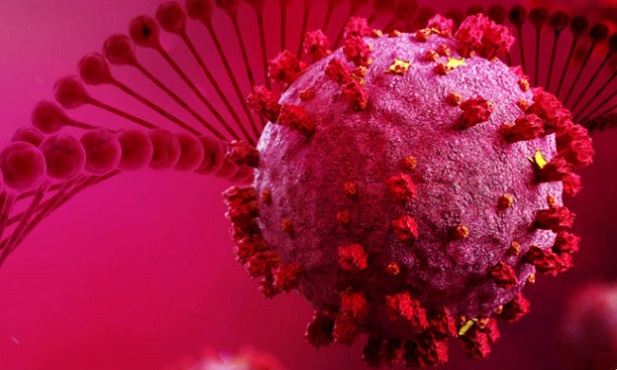Nikhil Prasad Fact checked by:Thailand Medical News Team Aug 18, 2025 3 months, 23 hours, 54 minutes ago
Thailand Medical: A Newly Discovered Viral Mechanism
Researchers from the Institute of Medical Biology, Chinese Academy of Medical Sciences and Peking Union Medical College, the Key Laboratory of Systemic Innovative Research on Virus Vaccine, and the Yunnan Key Laboratory of Vaccine Research and Development for Severe Infectious Diseases have uncovered a surprising mechanism that SARS-CoV-2 uses to increase its infection efficiency. Their work shows that the virus can create a special fusion RNA, known as ORF3a-E subgenomic RNA, which plays a crucial role in how effectively the virus multiplies and spreads. This
Thailand Medical News report highlights how this discovery could explain differences in how certain COVID-19 variants behave.
 SARS-CoV-2 Creates Hybrid RNA to Boost Its Power
What Is Subgenomic RNA
SARS-CoV-2 Creates Hybrid RNA to Boost Its Power
What Is Subgenomic RNA
SARS-CoV-2 does not rely only on its main genome. Instead, it produces shorter RNA fragments called subgenomic RNAs. These RNAs help the virus build different proteins needed for survival, replication, and immune system evasion. In this study, scientists found a hybrid version of these RNAs that combines two viral genes, ORF3a and E, into one powerful unit.
Why This Fusion Matters
The newly discovered ORF3a-E subgenomic RNA is not just an accidental byproduct. It actively boosts the virus’s ability to hijack human protein-making machinery. By promoting higher levels of a host protein called ribosomal protein S3 (RPS3), this fusion RNA ensures that infected cells produce more viral proteins at faster rates. It also helps the virus hide from the immune system, keeping natural antiviral defenses like interferon responses weak during the early stages of infection.
Differences Between Variants
Interestingly, the researchers noticed that this fusion RNA behaves differently in various strains of SARS-CoV-2. For example, in the original Wuhan strain, ORF3a-E RNA was highly active and strongly supported viral replication. In contrast, in the Omicron XBB variant, its activity was lower, which may partly explain why Omicron spreads quickly but often causes less severe disease during acute infection phase compared to earlier strains.
How the Study Was Done
The team used advanced single-cell sequencing to track this fusion RNA in infected human lung cells, as well as experiments in monkeys. They confirmed that this RNA appears throughout the virus’s life cycle, from the initial infection to the release of new viral particles. Laboratory tests also showed that it can significantly improve viral protein translation and increase the release of infectious particles from cells.
Why This Discovery Is Important
The identification of ORF3a-E RNA highlights a new layer of complexity in how SARS-CoV-2 survives and adapts. It shows that the virus can create new hybrid genetic tools to maximize its survival inside human hosts. Understanding this process may lead to new strategies for antiviral therapies and vaccines, sinc
e blocking this RNA could weaken the virus’s ability to spread.
The findings also underscore why COVID-19 continues to surprise scientists with its adaptability. The fusion RNA may represent a clever evolutionary trick that gives the virus flexibility when facing host defenses or treatments.
Final Thoughts
This research provides critical insight into how SARS-CoV-2 fine-tunes its infection strategies. By creating a hybrid RNA that boosts protein production and suppresses immune defenses, the virus ensures efficient replication. The differences observed between older strains and Omicron variants suggest that these viral tricks evolve over time, shaping the severity and spread of COVID-19. This discovery may open doors for developing more effective antiviral strategies that specifically target these hidden viral mechanisms.
The study findings were published in the peer reviewed journal: Frontiers in Immunology.
https://www.frontiersin.org/journals/immunology/articles/10.3389/fimmu.2025.1620229/full
For the latest COVID-19 News, keep on logging to
Thailand Medical News.
Read Also:
https://www.thailandmedical.news/news/breaking-thousands-of-novel-hybrid-genes-or-chimeric-rnas-found-in-the-blood-of-the-covid-19-infected
https://www.thailandmedical.news/news/breaking-sars-cov-2-nucleocytoplasmic-shuttling,-nuclear-localization-and-production-of-viral-host-chimeric-proteins-causes-long-covid-issues
https://www.thailandmedical.news/news/uk-study-finds-that-emerging-sars-co-2-subgenomic-rnas-drive-immune-evasion-and-viral-fitness
